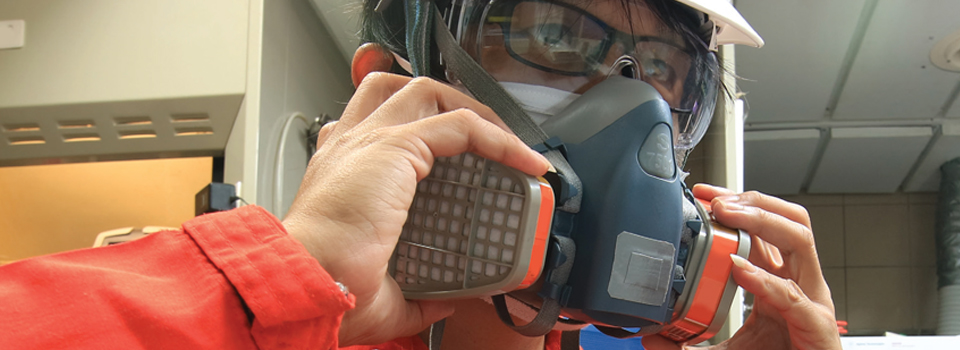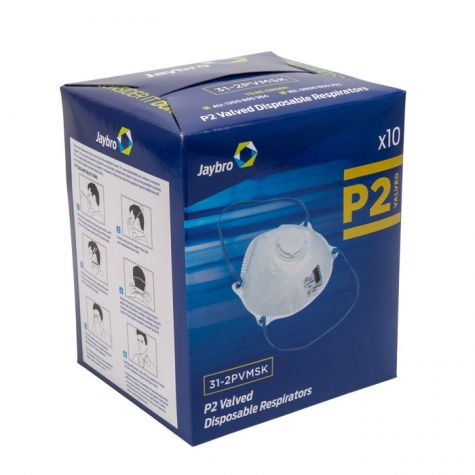How to wear a disposable dust mask

Dust masks are the most commonly used types of masks in construction. There are other types, such as respirators, but these are usually reserved for situations where fumes and aerosols are created. Dust masks are a type of Personal Protective Equipment (PPE) and are used to protect the worker from inhaling fine dust particles that can cause immediate discomfort and also, potentially, long term health problems.
When might I need a dust mask?
Although this is not an exhaustive list, here are some situations where you might need a dust mask:
- Cutting
- Drilling
- Grinding
- Sanding
- Loading
- Demolishing
It’s important to consider the material you’re handling when doing these activities. Materials containing silica, such as bricks, are especially hazardous. When possible, it’s always better to do these things in a workshop or other prefabricated manufacturing environment where proper ventilation and dust control is available.
What are the health risks of breathing in dust?
In case you’re tempted not to wear a dust mask, it’s important to remember that not wearing a mask in dusty work situations doesn’t only damage your health, it likely breaches workplace occupational health and safety regulations. Also, the health risks of not wearing a mask are serious. Materials containing silica are a particular problem because inhaling silica dust can cause airway and lung diseases like silicosis, bronchitis and emphysema.
Choosing the right type of mask
When wearing a mask in the workplace, it should indicate that it complies with the Australian/New Zealand Standard. The mask should be marked to show that they comply with AS/NZS 1716 Respiratory Protective Devices, and whether the mask is a P1 or P2 filter class. P1 masks protect against particles that are mechanically generated, and P2 masks protect against particles that are both mechanically and thermally generated. Neither of these masks protects against gases, fumes or chemicals.
How to wear a dust mask so it works
Basically, the performance of a dust mask relies on creating a good seal between the worker’s face and the mask. If the seal is leaky, contaminated air can leak into the mask and get into the airways and lungs. Everyone’s face is a different size and shape, so a dust mask that fits a colleague won’t necessarily fit you. You should try a few different sizes or brands with the same P-rating until you find one that gives a good seal. If you’re between sizes, opt for the smaller one as it will be easier to prevent leaks. Another thing that can interfere with getting a good seal is facial hair. Being clean-shaven when working in hazardous, dusty environments can be a good investment towards your future health. Once you’ve found a mask with a shape and size that suits you, follow these steps to put your mask on correctly:

- Ensure your hands are dry before handling the mask, as a damp mask won’t work properly.
- Cup the mask in one hand and put it over your nose and mouth. The bottom should go just under your chin, and the top should reach to the bony part of the bridge of your nose.
- Pull the strap(s) over your head. If your mask has two straps, the bottom one should sit around your neck, just under your ears. The top strap (or single strap) should sit above your ears.
- Mould the nose piece around the shape of your nose by pressing with your fingers. It should be snug so no air can pass in or out.
It is important to check the seal you have created before starting work. You can do this by breathing in deeply and making sure the mask “sucks” in against your face, indicating a good seal. Then breathe out and check if any air is escaping around the edges of the mask or the bridge of your nose. If there is air leakage, adjust the strap(s) and re-mould the nose piece until you achieve a good seal. If nothing seems to help, ask a colleague to check if for you or try a different size or shape mask.
Final points
Check the manufacturer’s directions, because some dust masks have specific lengths of time they can be worn. Some also specify “single use only.” For those that don’t have these guidelines, the general advice is that you can wear your mask until it is damaged, visibly soiled, damp, you can’t get a good seal or breathing resistance is increased. Remember, not wearing a mask properly is just as dangerous as not wearing one at all. Remember, if your mask doesn’t cover your nose and mouth, and doesn’t create a good seal against your face, you may as well not be wearing one.
 Sign In
Sign In 




